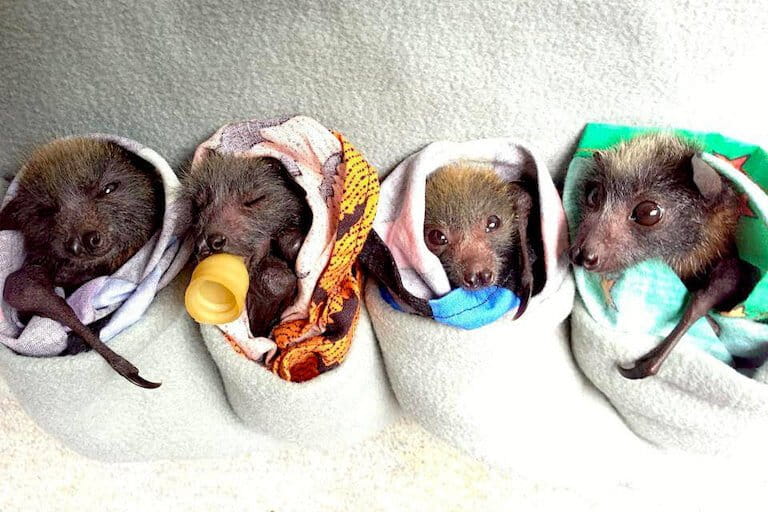- Bats provide many ecosystem services, yet their populations are declining due to habitat loss, climate change, hunting, and disease.
- Social media allows conservationists to collect large amounts of data, study human-nature interactions, understand conservation debates and discussions, and increase the public’s knowledge of their conservation.
- Public engagement with bat-friendly social media posts may boost appreciation of these species, and can be an influential part of conservationists’ efforts to inform and inspire the public to participate in their conservation.
- This post is a commentary. The views expressed are those of the author, not necessarily of Mongabay.
Bats save countries like the United States billions of dollars in pest control every year. They keep rainforests lush and crops growing. Bats even allow us to enjoy our favorite mixed drinks, such as margaritas and palomas. These denizens of the dark play a critical role in ecosystems, and our lives would be much harder if they were not around.
According to the International Union for Conservation of Nature (IUCN), there are more than 1,400 species of bats worldwide, yet over 200 species are considered “data-deficient” and over 100 species are considered endangered. Bat populations are dropping across the world due to climate change, habitat destruction, persecution, white-nose syndrome, wind energy and hunting. They are in desperate need of our help to survive, but they remain one of the least studied mammals on earth.
This lack of research is due to several factors. First, bats are elusive which makes them hard to find and does not allow researchers to study them efficiently. Second, due to bats’ nocturnal nature, people do not see them very often unless it is a chance encounter, such as bats inside their home. This leads to “bat blindness” or people forgetting about bats. Third, bats have long been associated with darkness, vampires, and disease which causes them to be one of the less liked creatures on the planet. All these factors have led to a lack of knowledge and the spread of misinformation about bats. An absence of knowledge creates a significant obstacle to appreciating bats’ essential functions, along with hindering the planning of management and conservation strategies. Additionally, finding ways to reverse misinformation on bats and increase the public’s awareness of the benefits bats provide has always been a challenge…until now.
Not just for charismatic animals anymore
Researchers have been using social media as a citizen science tool for a long time. As members of the public post pictures and videos of flora and fauna on social media, they provide a cost-effective route for researchers to track wildlife. The addition of time and place stamps on each individual post allows them to see where the wildlife is found in real time. These results can be combined with information from other citizen science apps, such as iNaturalist, and used to monitor where species are being found around the world.
Similarly, social media can be used to track the illegal pet and food trades by identifying poachers and others smuggling animals and their parts through photos. However, the same benefits are used to the opposite effect, as those involved in illegal pet and food trade rings utilize the same social media posts to locate and capture wildlife for sale. As poaching continues, we must be careful not to encourage the public to participate in these crimes towards animals.
Other studies have looked at the public’s emotions and attitudes towards wildlife. During these studies, conservation groups post conservation messages and photographs on social media platforms. Researchers then look at certain aspects of the posts, such as aesthetically pleasing photos, gore, and humans near wildlife, to see which emotions are elicited based on the “reactions” seen in the engagement on each post. They found some interesting results, including that mammals were the most popular taxa group and pictures of animals by themselves were more well liked than photos of animals with humans.

While many social media posts and studies have focused on charismatic animals, researchers and conservationists have realized that they need to include less charismatic animals if we are to save them before extinction. A 2022 study found 1300 media reports of bats being used for food and 450 reports of them being used for medicinal purposes. In understanding how humans use bats, conservationists may guide conservation and public health efforts and encourage alternative options.
A preliminary social media study was recently conducted by the author of this article. It looked at public engagement on charismatic (butterflies, bees, and fireflies) and non-charismatic (bats) pollinator Facebook posts during pre-pandemic (2018-2019) and post-pandemic (2021-2022) time periods. While more research is needed to confirm the findings, some positive trends were found. These trends include an increase in engagement, positive reactions and comments on bat posts in the post-pandemic time period as compared to pre-pandemic time period. This shows a hopeful increase in the public’s interest in bats which can lead to conservation actions.
Social media successes
Over the last five to 10 years, there have been several success stories of social media shining a positive light on bats. Two such success stories are from Bat Conservation International.
In January 2013, Bat Conservation International learned that an area of land used by Mexican free-tailed bats (Tadarida brasiliensis) was being bought by a housing development company. If the land were developed, it would lead to increased bat-human contact and many negative impacts. So, they turned to their followers and social media to raise awareness of the situation. According to Bat Conservation International, “In just three weeks, more than 20,000 people signed a petition urging protection of Bracken Cave as a site of global importance and packed a May 2013 San Antonio City Council public forum. BCI’s social media followers jumped from 20,000 to 60,000.” With the help of NGOs, local politicians, news media, and the finding of a critical water aquifer on the same patch of land, Bat Conservation International was able to raise enough money to purchase the land. This purchase will ensure that there is a safe area for the bats to live in for many years to come.
In October 2015, Bat Conservation International posted a message on social media stating “Cuteness shouldn’t be the measure for conservation” that resonated with 2.2 million people within 72 hours. That is an amazing result from just one social media post! Just think about how big of an impact we can make if we post more positive content!

How you can help
Social media is an important tool in the conservationist’s toolbox. A 2015 study found that the large amount of data collected can supply important information to different stakeholders, encourage fundraising for conservation, and contribute a starting point to quantify active participation in conservation actions. In posting more positive information and photos, people will see bats in a more positive light and change their attitudes towards bats.
We need bats, and bats need us. Come join the ‘dark side’ and save our bat species!
Prior to placing a post on social media, research the information that you are posting to ensure it is accurate, positive, and true. Some informative bat sites include Bat Conservation International, Bat Conservation Trust, Merlin Tuttle’s Bat Conservation, and The Nature Conservancy.
Post pictures of bats that are aesthetically pleasing and keep the amount of gore or other negative references to bats to a minimum.
Utilize hashtags to promote celebrations of bats and connect with bat organizations.
Make suggestions for how the public can help bats in their everyday lives, such as put up bat boxes, plant a bat garden or become involved in an acoustic monitoring program.
Encourage conservation groups, zoos, museums, or any other organizations who work with bats on a daily basis to post more information about bats on their social media pages.
Share posts about bats on your social media!
Emily Eilers works as a veterinarian at University of Cincinnati-Blue Ash and PetIQ. She is a graduate student with Project Dragonfly at Miami University in Oxford, Ohio in conjunction with Cincinnati Zoo & Botanical Garden, and her master’s degree work focuses on changing public perceptions of bats and encouraging conservation behaviors to help save endangered bat species.
Banner image: Lesser long-nosed bats (Leptonycteris yerbabuenae). Image by Alan Schmierer via Flickr (public domain).
Citations:
Bat Conservation International. (1992, June 1). Bass family invest in a new era of bat conservation. BATS Magazine, 10(2). https://www.batcon.org/article/bass-family-invest-in-a-new-era-of-bat-conservation/
Bat Conservation International. (2015, May 12). Saving Bracken Cave. BATS Magazine, 34(2). https://www.batcon.org/article/saving-bracken-cave/
Bat Conservation International. (2015, October 13). Social media success. BATS Magazine, 34(4). https://www.batcon.org/article/social-media-success/
Di Minin, E., Tenkanen, H., & Toivonen, T. (2015). Prospects and challenges for social media data in conservation science. Frontiers in Environmental Science, 3, 63.
Eilers, E. (2022). The Battle of the Pollinators: Do Bats or Other Pollinators Elicit Greater Facebook Engagement? [Unpublished manuscript]. Miami University.
IUCN. (2023). The IUCN Red List of Threatened Species. IUCN. Version 2022-2. https://www.iucnredlist.org
Shaw, M. N., Borrie, W. T., McLeod, E. M., & Miller, K. K. (2022). Wildlife Photos on Social Media: A Quantitative Content Analysis of Conservation Organisations’ Instagram Images. Animals, 12(14), 1787.
Tackett, E. S., Kingston, T., Sadeghmoghaddam, N., & Rutrough, A. L. (2022). Global medicinal use of bats: A systematic literature and social media review. Diversity, 14(3), 179.
Toivonen, T., Heikinheimo, V., Fink, C., Hausmann, A., Hiippala, T., Järv, O., … & Di Minin, E. (2019). Social media data for conservation science: A methodological overview. Biological Conservation, 233, 298-315.
See more coverage of bat conservation here, like this recent feature:
Community conservation benefits Sulawesi flying foxes, but more is needed, experts say
This story first appeared on Mongabay
South Africa Today – Environment
This article is licensed under a Creative Commons Attribution-NoDerivatives 4.0 International License.
You may republish this article, so long as you credit the authors and Mongabay, and do not change the text. Please include a link back to the original article.












